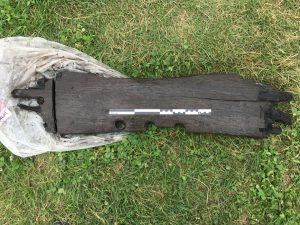A piece of carved oak timber, discovered at the Viking fortress at Borgring, allowed for dendrochronological dating of the find and thus the site.

The previously unknown Viking fortress at Borgring was discovered in 2014 and currently undergoes archaeological investigation that revealed new information about the life, function and destruction of the site. In a meadow surrounding the fort a 1-metre-long piece of carved oak wood with drilled holes and several wooden pegs were discovered. The wood piece was found on top of a peat layer, and is fully preserved as it is completely water-logged. Although it is yet not possible to determine the function of the artefact, the discovery allowed to carry out dendrochronological dating. It was determined that the wood comes from an oak which has grown in the years 829-950 in the Danish area. The the tree has fallen at some point after year 966. A comparison with the material from the Trelleborg fortress in Sjælland shows a high statistical correlation that confirms the dating. According to the researchers, basing on the heavy wear on the surface of the artefact it is possible that he piece ended as waste in the late 900s, possibly in the early 1000s. This investigation provides evidence that the fortress dates to the late 10th century, possibly the reign of Viking king Harold Bluetooth (c.958-c.987).
(after EurekAlert!, Museum of South East Denmark & Nanna Holm)